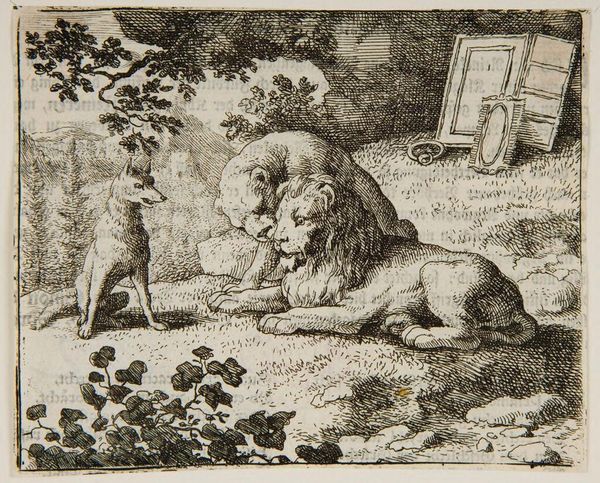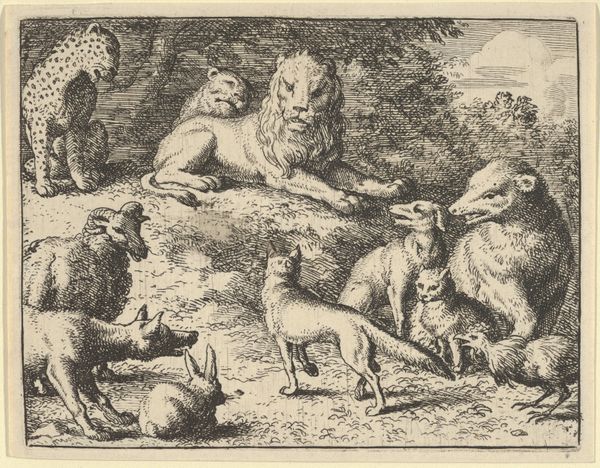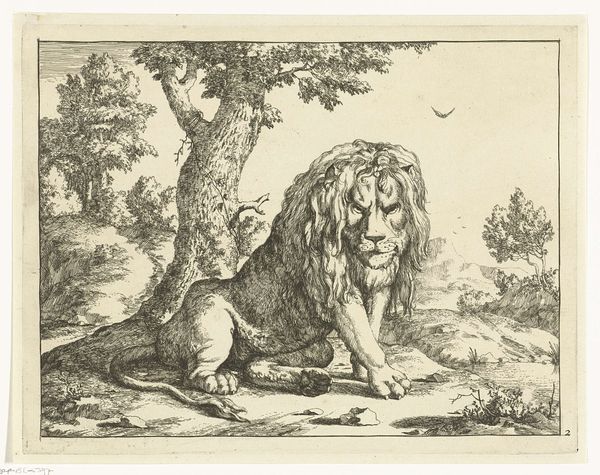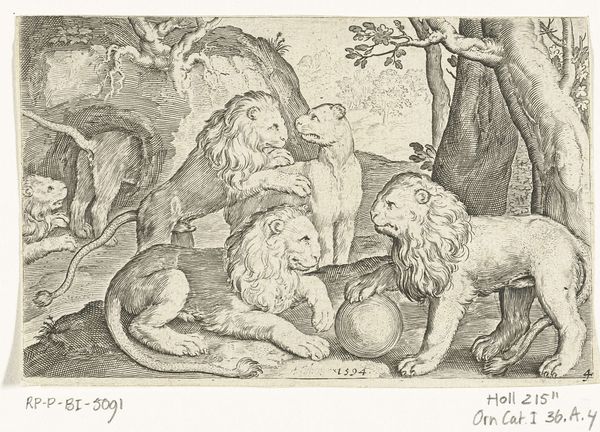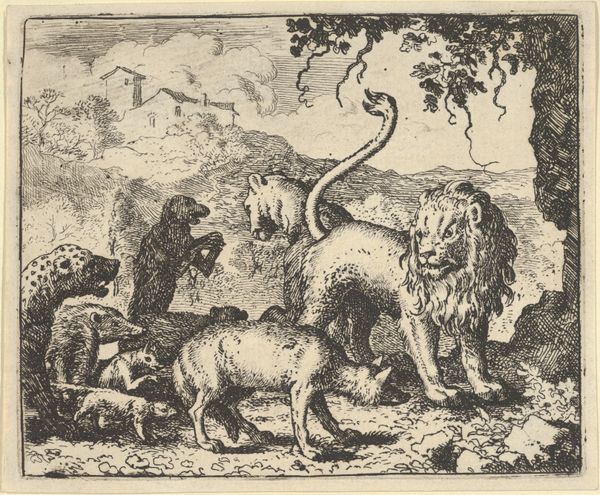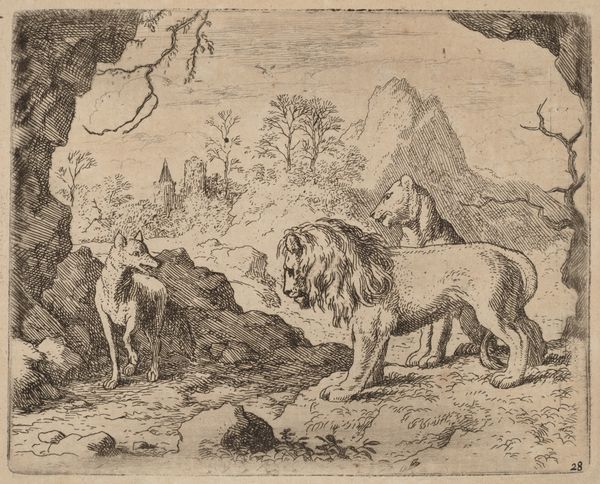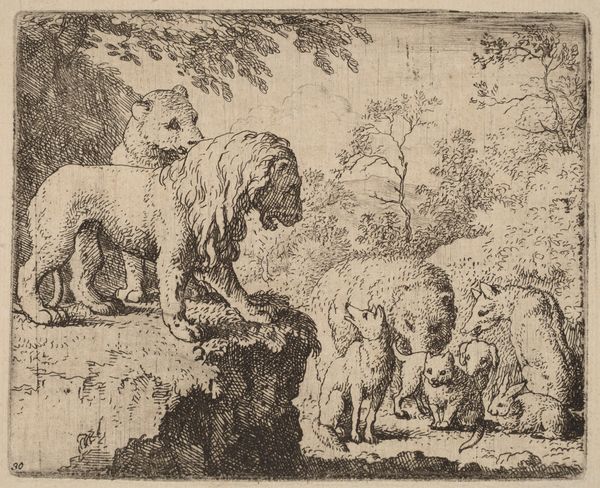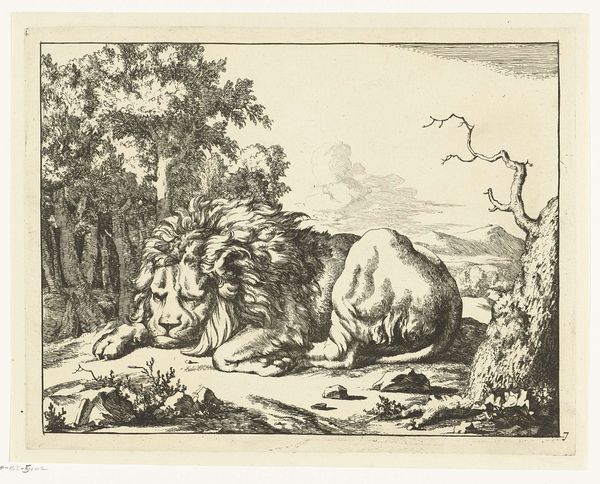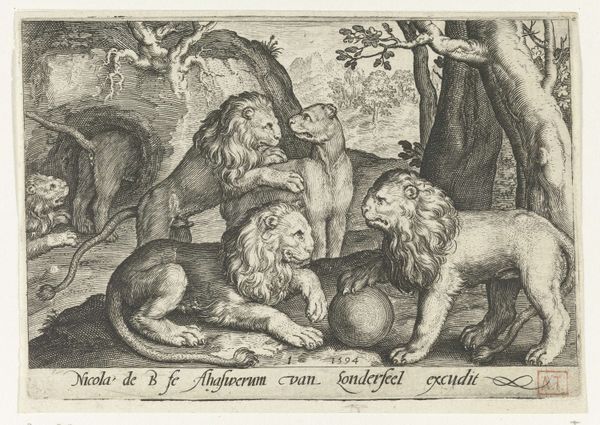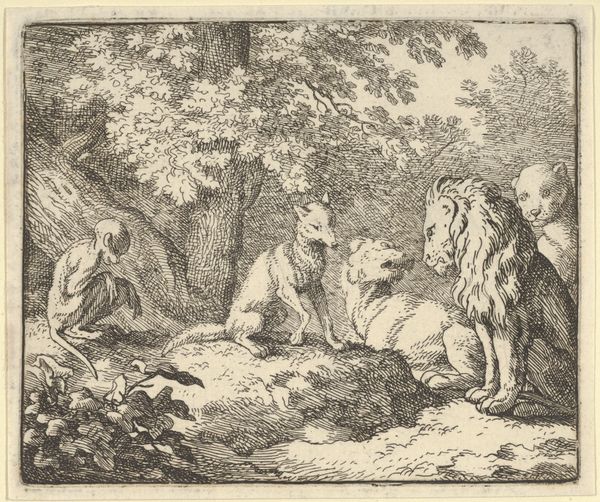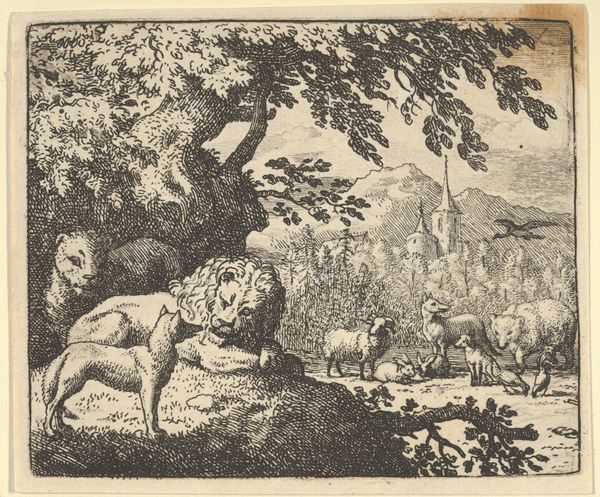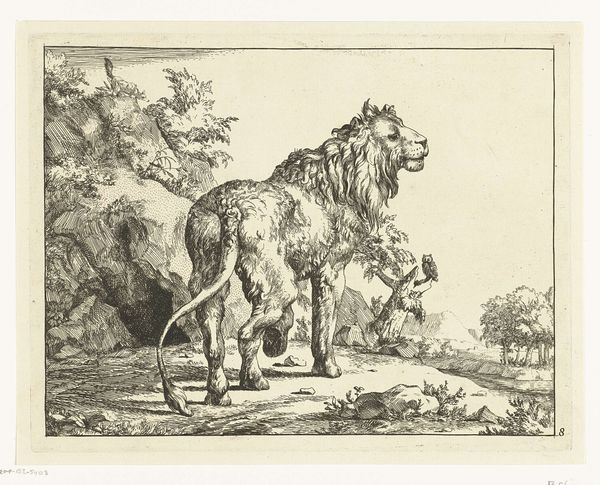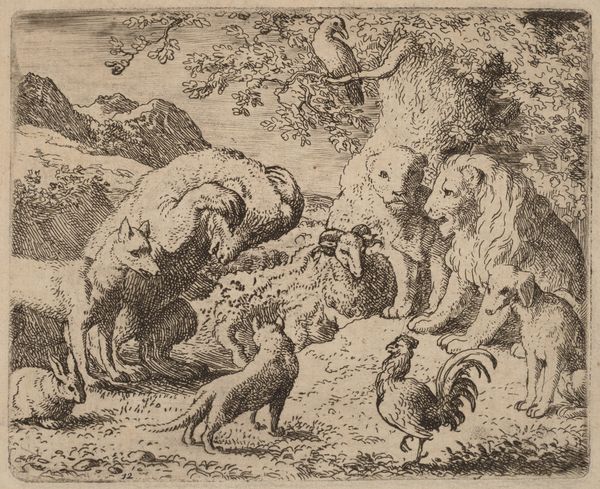
Renard Lies that he Gave the Ram Various Precious Objects that Were Meant for the Lion and Lioness from Hendrick van Alcmar's Renard The Fox 1650 - 1675
0:00
0:00
drawing, print, etching, engraving
#
drawing
#
narrative-art
#
pen drawing
# print
#
etching
#
genre-painting
#
northern-renaissance
#
engraving
Dimensions: Plate: 3 3/4 × 4 5/8 in. (9.5 × 11.7 cm) Sheet: 4 in. × 4 13/16 in. (10.1 × 12.2 cm)
Copyright: Public Domain
Allart van Everdingen created this etching depicting Renard the Fox sometime in the mid-17th century. It illustrates a scene from the popular medieval fable, "Reynard the Fox," where Renard lies to the Lion and Lioness about giving precious objects to the Ram. The choice of a cunning fox as the central figure is telling. In the context of 17th-century Dutch society, where mercantile success and social mobility were on the rise, the fox could be seen as a symbol of shrewdness, ambition, and perhaps even deception. The Lion and Lioness, symbols of royalty, are shown being deceived. We might ask, does this image comment on the social structures of its time, perhaps critiquing the established order through animal allegory? To fully understand this etching, one must consider the broader cultural landscape of the Dutch Golden Age. The rise of a wealthy merchant class, the complex political landscape, and the role of fables in shaping moral values are all relevant. Art historians rely on such contextual research to interpret the social meanings embedded in artworks like this.
Comments
No comments
Be the first to comment and join the conversation on the ultimate creative platform.
